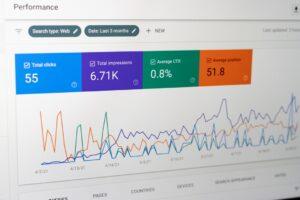Email Marketing Campaigns, Strategies, tools, and tips for beginners
Email marketing can seem daunting at first. But with the right tools and tips, you can create effective email marketing campaigns that reach your target audience and help you achieve your business goals. In this blog post, we'll give you a crash course in email marketing, and provide some helpful tips and resources to get you started. So whether you're just starting or looking for ways to improve your email marketing strategy, read on for more information.
What is email marketing and why should you use it
Email marketing is the process of sending targeted messages to a group of people via email. These messages can be anything from advertisements, to newsletters, to customer surveys. Email marketing is an important tool because it allows businesses to directly communicate with their customers and create a relationship with them. This communication can help businesses retain customers and encourage them to return in the future. Additionally, email marketing can be a cost-effective way to reach a large number of people. When done correctly, email marketing can be an extremely valuable asset for any business.
Email marketing is important because it allows businesses to directly communicate with their customers. This communication can help businesses retain customers and encourage them to return in the future. Additionally, email marketing can be a cost-effective way to reach a large number of people. When done correctly, email marketing can be an extremely valuable asset for any business.
Why email marketing is important
Email marketing is important because it allows businesses to directly communicate with their customers. This communication can help businesses retain customers and encourage them to return in the future. Additionally, email marketing can be a cost-effective way to reach a large number of people. When done correctly, email marketing can be an extremely valuable asset for any business.
How to set up an email marketing campaign
ActiveCampaign is a great platform for setting up marketing
campaigns. It allows you to easily create lists of subscribers, send out
automated emails, and track the success of your campaigns. First you will have to create a new account, here.
Here's how to set up a marketing campaign in ActiveCampaign:
1. Create a list of subscribers.
The first step is to create a list of people who will receive your marketing emails. You can do this by importing a list of contacts from a CSV file, or by manually adding them to the list one by one.
2. Send out automated emails.
ActiveCampaign makes it easy to send out automated emails to your subscribers. You can create email campaigns that are triggered by specific actions, such as subscribing to a list, or opening an email.
3. Track the success of your campaigns.
ActiveCampaign provides detailed reports on the performance of your marketing campaigns. You can see how many people opened and clicked on your emails, and which emails were the most successful. This information can help you to improve the effectiveness of your marketing campaigns.
The best tools and software for email marketing
Email marketing is a great way to connect with customers and keep them updated on your latest products or services. But to make the most of this marketing strategy, you need the right tools and software. In this article, we'll discuss the best platforms for email marketing and some of the best email marketing software on the market.
When it comes to email marketing, there are a few key things you need to keep in mind. First, you need to make sure you're using an effective platform that will allow you to reach your target audience. There are several different platforms out there, so it's important to do your research and choose the one that's right for you.
Second, you need to make sure you're using the right software. There are several different email marketing software on the market, so again, it's important to do your research and choose the one that's right for you. The good news is that there are several great options out there, so you should be able to find the perfect software for your needs.
Finally, you need to make sure you're using effective strategies in your email marketing campaigns. This means having a clear and concise message, using attractive visuals, and making use of personalization and segmentation. If you can master these things, you'll be well on your way to success with email marketing.
Now that you know a little bit more about email marketing, let's take a look at some of the best platforms and software on the market.
A great platform for beginners is AWeber. It's easy to use, it's easy to set up, and it's simple to get things running. One thing with AWeber is, that once you have some experience and a bigger list, you might want software with more features and automation than AWeber has. I use it, but it's a bit old school, to be honest. The automation is okay, but compared to some of the offerings out there, is a bit dated. But it's forgiving, and you'll get started easily.
GetResponse is also a good platform for beginners. It has more automation features available in the paid version, and it's relatively cheap to get started. A word of warning though, if you start making silly claims, and being a bit spammy, they may limit your account or shut you down. If you do things that aren't spammy, you should be okay.
ActiveCampaign is another great option for those just getting started with email marketing.
Tips for creating effective email marketing campaigns
Email marketing campaigns can be an effective way to reach out to customers and promote your business. However, it's important to create effective campaigns that will capture the attention of your audience. Here are a few tips for creating successful email marketing campaigns.
1. Keep your subject lines short and to the point.
2. Make sure your email content is relevant and interesting.
3. Use images and videos to break up your text and add visual interest.
4. Use calls to action to encourage recipients to take action.
5. Test your campaigns before you send them out.
By following these tips, you can create email marketing campaigns that will be successful in reaching your target audience.
How to track the success of your email marketing campaigns
Email marketing can be a great way to keep in touch with your customers and promote your products or services, but how do you know if it’s working? Luckily, there are a few ways to track the success of your email marketing campaigns.
One way to measure the success of your campaigns is to look at how many people are opening and clicking through your emails. You can usually find this information in your email marketing software. If you see a high open rate, that means people are interested in what you have to say. A low open rate could mean that your subject lines aren’t interesting or that your list is outdated.
Another way to track the success of your email marketing is to ask people to take a specific action, such as signing up for a newsletter or taking a survey. You can then see how many people completed the action and use that information to improve future campaigns.
Finally, you can also track the success of your email marketing by looking at sales data. If you see a spike in sales after you send out a campaign, that’s a good sign that your emails are effective.
By tracking the success of your email marketing campaigns, you can make sure you’re reaching your target audience and making the most of your marketing efforts.
The software I use is ClickMagick. And it's easiest to use campaigns. They have all the help to get you started and their support is outstanding.
You can do without tracking, but you won't know how many people opted in, and so won't have any way to improve your results. You want at a minimum 30% opt-in rate, and you ideally want to get it up above 50% if you can do.
To do this properly, you really want to send your subscribers to a funnel.
This allows you the possibility to make some money from your subscribers as you add them, and who doesn't like that? When you get this right, you can pay for 100 subs, lets say they're $1 each, and when your funnel works correctly, you can earn more than $1 per subscriber. That means that you get your subscriber for free. That means you can add an unlimited amount of them. Yes. Free. And these subscribers who buy are likely to buy again, that's when you're business becomes profitable.
Strategies for improving your email marketing results
Email marketing is one of the most effective ways to reach out to your customers and promote your products or services. But if you're not seeing the desired results, it may be time to tweak your strategy. Here are a few tips for improving your email marketing results.
1. Make sure your list is targeted. It's important to have a list of people who are actually interested in what you're selling. You can do this by segmenting your list or using a tool like LeadPages to target specific groups of people.
2. Write great subject lines. Your subject line is what determines whether or not people will open your email. So make sure it's something attention-grabbing and relevant to the content of your email.
3. Keep your emails short and to the point. People are more likely to read and engage with shorter emails. So get to the point quickly and avoid rambling on.
4. Use images sparingly. Too many images can make your email look cluttered and can also slow down the loading time. So use them sparingly and only when they're truly relevant to the email's content. You can also end up in the promotions tab in google mail (gmail) if you have too many graphics, because that makes the email look promotional. Generally, it's better to stay clear of graphics to start with.
5. Test, test, test. Always test your emails before sending them out to see what works best. Try different subject lines, send times, and email content to see what gets the best results.
By following these tips, you can improve your email marketing results and start seeing the ROI you're looking for.
Email Marketing KPIs
Email Marketing KPIs are important metrics that help measure the success of an email marketing campaign. By tracking these key performance indicators, you can determine whether or not your campaign is reaching its target audience and generating the desired results. In this article, we will discuss the most important email marketing KPIs and provide examples of how to track them.
Email Marketing KPIs to Track
Open Rate: The open rate is the percentage of people who opened your email out of the total number of people who received it. This metric helps you gauge the interest level of your target audience in the subject matter of your email.
To calculate your open rate, simply divide the number of people who opened your email by the total number of people who received it. For example, if 100 people received your email and 25 of them opened it, your open rate would be 25%.
Click-Through Rate: The click-through rate is the percentage of people who clicked on a links in your email out of the total number of people who received it. This metric helps you gauge the effectiveness of your call-to-action and the overall interest level of your target audience in the products or services you are promoting.
To calculate your click-through rate, simply divide the number of people who clicked on a link in your email by the total number of people who received it. For example, if 100 people received your email and 10 of them clicked on a link, your click-through rate would be 10%.
Unsubscribe Rate: The unsubscribe rate is the percentage of people who unsubscribed from your email list after receiving your email. This metric helps you gauge the overall satisfaction of your target audience with your content.
To calculate your unsubscribe rate, simply divide the number of people who unsubscribed from your email list by the total number of people who received your email. For example, if 100 people received your email and 5 of them unsubscribed, your unsubscribe rate would be 5%.
Conversion Rate: The conversion rate is the percentage of people who completed a desired action after receiving your email. This metric helps you gauge the effectiveness of your call-to-action and the overall interest level of your target audience in the products or services you are promoting.
To calculate your conversion rate, simply divide the number of people who completed a desired action by the total number of people who received your email. For example, if 100 people received your email and 2 of them purchased the product you were promoting, your conversion rate would be 2%.
Email Marketing KPIs Examples
Open Rate: 25%
Click-Through Rate: 10%
Unsubscribe Rate: 5%
Conversion Rate: 2%
As you can see, the most important email marketing KPIs to track are open rate, click-through rate, unsubscribe rate, and conversion rate. By tracking these metrics, you can determine the effectiveness of your email marketing campaign and make necessary adjustments to improve your results.
Email Marketing Free Tools
Luckily, there are several email marketing free tools that can help you get the most out of your email marketing campaigns without spending a dime. These software programs offer a wide range of features and allow you to control every aspect of your email marketing, from automated email sequences to detailed campaign tracking.
One of the most popular free email marketing tools is MailChimp. This software allows users to create beautiful email newsletters and track their results with ease. With over 15 million users, MailChimp is one of the most popular options for small businesses and startups.
Another great free email marketing tool is Sendinblue. This software offers a wide range of features, including autoresponders, contact management, and detailed campaign analytics. Sendinblue also has a very user-friendly interface, making it a great option for businesses of all sizes.
Finally, Constant Contact is another excellent free email marketing tool. This software provides users with a wide range of features, including email templates, contact management, and campaign reporting. Constant Contact also offers a 60-day free trial, making it a great option for businesses that want to test out the software before committing to a paid plan.
No matter what your budget is, there are several email marketing free tools that can help you achieve your desired results. These software programs offer a wide range of features and allow you to control every aspect of your email marketing. With so many options available, you’re sure to find the perfect tool for your business.
Some of the "paid" examples above do also include free tiers, but you never get anything good for free, and this is particularly the case with free email marketing platforms. The free ones, tend to either be lower on features, or more expensive once you do start paying for the subscribers, or worse still, some of them don't like affiliate marketing. Be careful to check the rules of the email marketing platform you choose, free or otherwise, as the terms do change over time. As I mentioned I have aWeber and GetResponse, and both do work well for beginners, as does ActiveCampaign if you can afford it.
Statistics for Email Marketing
Despite the rise of social media and other online platforms, email marketing is still a powerful tool that should not be underestimated. Statistics show that email marketing is still one of the most successful forms of marketing, with open rates and click-through rates that are much higher than those of other platforms.
Email marketing is a great way to reach out to your target audience, and it’s also very cost-effective. But what are the most important statistics that you should know about email marketing?
Here are some key statistics that every marketer should know:
1. Email is still the most popular form of communication online
There are over 3.8 billion email users in the world, and this number is expected to grow to 4.48 billion by 2023. This means that email is still the most popular form of communication online, despite the rise of other platforms such as social media.
Automation Email Marketing
Email marketing is one of the most efficient and effective ways to reach your target market. It's a great way to stay in touch with customers, promote new products or services, and build relationships with potential and current customers. But manually sending out individual emails can be a time-consuming process. That's where automation comes in. With email marketing automation, you can set up automated email campaigns that send out messages to your customers regularly, without you having to lift a finger.
Email marketing automation can help you save time and resources by automating the process of sending out mass emails. Instead of having to write and send each email individually, you can create an email template and send it to a large list of contacts with just a few clicks. This can free up your time so that you can focus on other aspects of your business.
In addition, automated email campaigns can be highly targeted and personalized. You can segment your contact list and send different emails to different groups of people. This ensures that each customer receives content that is relevant to them.
Email marketing automation is an essential tool for any business that wants to stay competitive in the modern marketplace. If you're not using it, you're missing out on a huge opportunity to reach and engage your customers.
Email Marketing Benchmarks
We all know that email is a powerful tool, but what are the typical open and click-through rates? How often should you be sending out emails for the best results? And what type of content gets the most engagement? Read on to find out!
Email marketing is one of the most powerful tools in a digital marketer’s toolbox. After all, it’s estimated that there are 3.8 billion email users worldwide, and each day, around 269 billion emails are sent. That’s a lot of potential customers!
But with such a large volume of email being sent every day, how can you make sure that your messages stand out from the rest and get noticed?
One way to do this is to focus on your email marketing benchmarks. By understanding industry averages for open rates, click-through rates, unsubscribe rates, and more, you can set realistic goals for your own campaigns and gauge your success against your peers.
Here are some email marketing benchmarks to keep in mind for your next campaign:
- The average open rate for email marketing is 20.81%. This means that, on average, around 1 in 5 people who receive your email will open it. Of course, this number will vary depending on factors like the type of email, the subject line, and the list you’re sending to.
- The average click-through rate for email marketing is 3.57%. This means that, on average, around 1 in 28 people who open your email will click on a link inside it. Once again, this number will vary depending on the type of email, the offer, and the list you’re sending to.
- The average unsubscribe rate for email marketing is 0.17%. This means that, on average, around 1 in 600 people who receive your email will unsubscribe from your list. This number is usually quite low, but it can be higher if your emails are too frequent, too sales-y, or if you’re not providing value.
- The average bounce rate for email marketing is 2.59%. This means that, on average, around 1 in 40 people who receive your email will have it bounce back to them undelivered. This can happen for a number of reasons, such as an invalid email address, a full inbox, or a problem with the recipient’s email server.
- The average complaint rate for email marketing is 0.03%. This means that, on average, around 1 in 3,333 people who receive your email will mark it as spam. This number is usually quite low, but it can be higher if your emails are too sales-y or if you’re not providing value.
Keep these benchmarks in mind as you plan and execute your next email marketing campaign, and you’ll be on your way to success!
Where do I get subscribers for my emails?
You can get traffic from lots of different places, Facebook posts, YouTube videos, your own blog posts. There are tons of ways to get subscribers. If you are new to this, which I assume you are, and you put a link in any of those ideas above, you'll only get a trickle of subscribers. Maybe 2 or 3 if you're lucky, and will have to keep doing whatever you're doing to get more.
A really easy way to start, if you have the money, is to buy a solo ad. A solo ad is an email that a solo ad vendor sends to their list, to get people to click, then you buy a number of clicks. That means that you will get 100 people clicking on your link. That's usually to an opt-in page that you have created, and is linked to your email list.
If you ask the solo ad vendor nicely, I'm sure that they will check to make sure that you have everything in place.
I mentioned earlier that you need to have a funnel to make to work properly. I mean, you can capture the subscribers into the list, and email them without one. But you'd miss out on the chance to make some money from each subscriber. If you're interested in hearing more about funnels, please drop a comment below, and I will put together a bit of a post for you.
Here is an awesome guy who will get you started with some of the best traffic on the internet... you can get traffic cheaper, but it won't be anywhere near as good. Get it here.
E-Mail Marketing Stats: https://blog.hubspot.com/marketing/email-marketing-stats


























